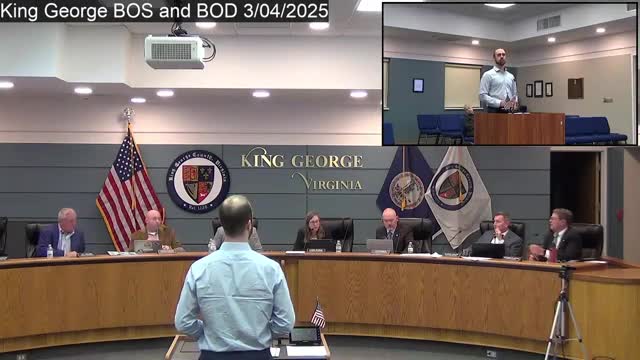King George Solar Project Faces Community Pushback Over Land Size Changes
March 04, 2025 | King George County, Virginia
Thanks to Scribe from Workplace AI , all articles about Virginia are free for you to enjoy throughout 2025!

This article was created by AI using a video recording of the meeting. It summarizes the key points discussed, but for full details and context, please refer to the video of the full meeting. Link to Full Meeting
One of the key topics addressed was the financial responsibility for decommissioning the solar panels, which will be required after 40 years of operation. Officials emphasized that the ordinance mandates the establishment of a surety bond to cover the entire cost of decommissioning, ensuring that neither the county nor former landowners would bear this financial burden. This measure aims to alleviate concerns from residents about potential future liabilities.
The discussion also touched on the project's energy output and its distribution. Questions arose regarding whether the energy generated in King George would directly benefit the local community. Officials explained that energy from the solar project would be integrated into the broader power grid, making it challenging to trace the exact source of electricity consumed locally. They likened the energy distribution to a bathtub with multiple spouts and drains, where power is drawn from a collective source based on demand rather than a specific location.
Community feedback has been a significant aspect of the project, with many residents expressing opposition due to the project's size and the number of parcels involved. Concerns were raised about changes in the land size initially presented to the public, prompting calls for clarification on the final project specifications. Officials confirmed that the application submitted in January 2024 included all current parcels and that any changes would require a separate special exception process.
The meeting highlighted the ongoing efforts by project developers to engage with local residents, including door-to-door outreach to inform property owners about the project and invite them to community open houses. However, some officials acknowledged the challenges in ensuring comprehensive community involvement, particularly as the project progresses.
As the solar energy project moves forward, the discussions from this meeting underscore the importance of transparency and community engagement in local government decisions. The county will continue to navigate the complexities of renewable energy development while addressing the concerns of its residents. Future meetings are expected to further explore these issues and provide updates on the project's status.
Converted from King George BOS and BOD 3/04/2025 meeting on March 04, 2025
Link to Full Meeting
Comments
View full meeting
This article is based on a recent meeting—watch the full video and explore the complete transcript for deeper insights into the discussion.
View full meeting